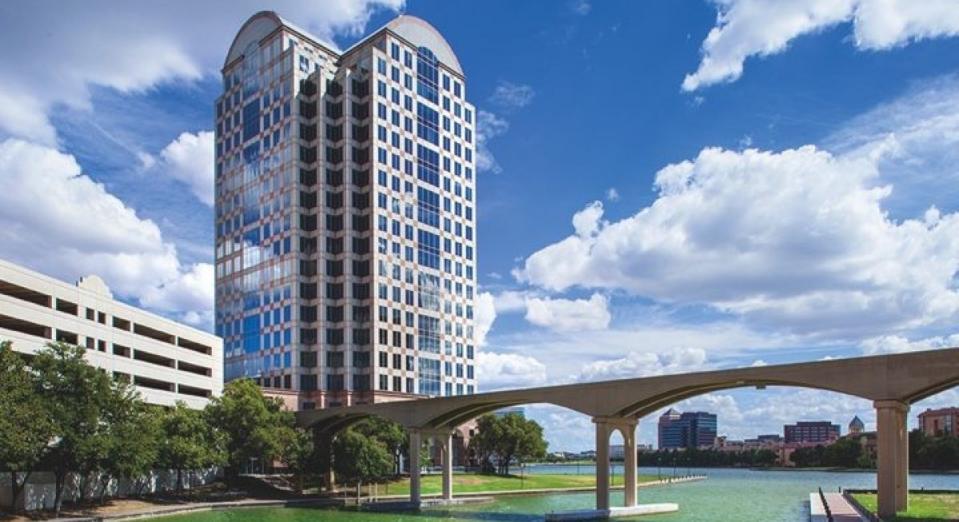DBS downgrades Prime US REIT on high gearing, refinancing risks, falling occupancy

DBS Group Research has downgraded Prime US REIT to “hold” following its results for 1HFY2023 ended June.
DBS Group Research has downgraded Prime US REIT OXMU to “hold” following its results for 1HFY2023 ended June, citing high gearing, refinancing risks and declining occupancy among the US office REIT’s properties.
In an Aug 10 note, DBS analysts Rachel Tan and Derek Tan downgraded Prime US REIT to “hold” from “buy”, with a lower target price of 18 US cents (24.29 cents) from 33 US cents previously.
DBS pegged their target price to 0.3x price-to-net asset value ratio (P/NAV), assuming NAV could decline by another 10%, to factor in concerns of high gearing and limited buffer to 45% gearing limit.
Prime US REIT’s high gearing at 42.8% could potentially escalate into a concern should asset valuation decline more than expected, write DBS’s analysts.
The REIT’s manager says it will continue to explore divestment options, although this remains highly challenging, and may tap into equity markets at the right time. Other options include reducing the dividend payout ratio, and proceeds from dividend reinvestment plans.
While Prime US REIT has a gearing and interest coverage ratio (ICR) buffer before it hits the Monetary Authority of Singapore's (MAS) limit of 50% and 2.5x respectively, and the extension of the debt expiry has somewhat alleviated debt refinancing risks for now, extended to FY2024.
“We are concerned that a buffer of only a 5% asset valuation decline for gearing to hit 45% (15% to hit 50% gearing) could be insufficient to comfort investors. In addition, the deterioration of portfolio occupancy may elevate potential risks to the asset valuation,” say DBS’s analysts.
The manager of Prime US REIT declared a distribution per unit (DPU) of 2.46 US cents for 1HFY2023, 30.1% lower y-o-y.
Portfolio occupancy fell by 3 percentage points (ppt) q-o-q to 85.6% from 88.6% in 1QFY2023.
Prime US REIT’s portfolio occupancy has been on a declining trend and will likely weigh down on portfolio performance should backfilling take longer than expected, they add. “We remain hopeful that greenshots of increasing leasing discussions could see a turnaround in US office outlook. Our target price has a 5% downside to current share price in view of potential re-rating catalysts to emerge.”
Leasing activity remained slow in 2QFY2023, with Prime US REIT signing some 67,000 sq ft of leases, compared to 64,400 sq ft in 1QFY2023. “However, we note that Prime renewed the lease of its largest tenant, Charter Communication, in July, with an extended three-year lease. The lease expiries remaining in FY2023 have reduced to 9%, the largest of which is attributed to Prime’s third-largest tenant Sodexo, whose lease is expiring in December. The lease contributes 5.3% of cash rental income (CRI).”
DBS says it will continue to monitor the situation for any potential rerating catalysts, such as stronger signs of a recovery in the US office market; the Fed pausing or cutting interest rates; and an improvement in macroeconomic sentiment/outlook.
Signs of bottoming emerge
On the other hand, RHB Bank Singapore analyst Vijay Natarajan thinks Prime US REIT portfolio occupancy will reach a trough at 80% levels, while noting that the REIT’s assets are “still broadly outperforming comparable peers amid a challenging market”.
In an Aug 11 note, Natarajan maintains “buy” on Prime US REIT with a lower target price of 40 US cents, down from 57 US cents previously. The target price includes a 4% ESG premium, based on RHB’s in-house methodology.
The key market concern lies on Prime US REIT’s ability to refinance major debts, which are maturing in July 2024, and a potential breach in financial covenants, says Natarajan.
However, with small green shoots emerging — the US’s economic recovery and return-to-office trend — he believes refinancing is still likely. “Prime US REIT is trading at distressed levels, at 0.3x P/BV, and offers a 24% yield.”
Natarajan lowers his FY2023 and FY2024 DPU forecast by 7% and 8% on lower occupancy rate assumptions and higher interest costs, and lifts cost of equity estimates by 250 basis points (bps) to 14% amid strong sector headwinds.
As at 12.23pm, units in Prime US REIT are trading 0.4 US cents loewe, or 2.04% down, at 19.2 US cents.
See Also:
Click here to stay updated with the Latest Business & Investment News in Singapore
Brokers' Digest: IREIT Global, Dyna-Mac Holdings, OCBC, Venture Corporation, StarHub
DBS sweet on Delfi; maintains ‘buy’ call and raises TP to $1.63
DBS lowers Lendlease Global Commercial REIT’s TP to 90 cents on higher interest rates and forex risk
Get in-depth insights from our expert contributors, and dive into financial and economic trends

 Yahoo Finance
Yahoo Finance 